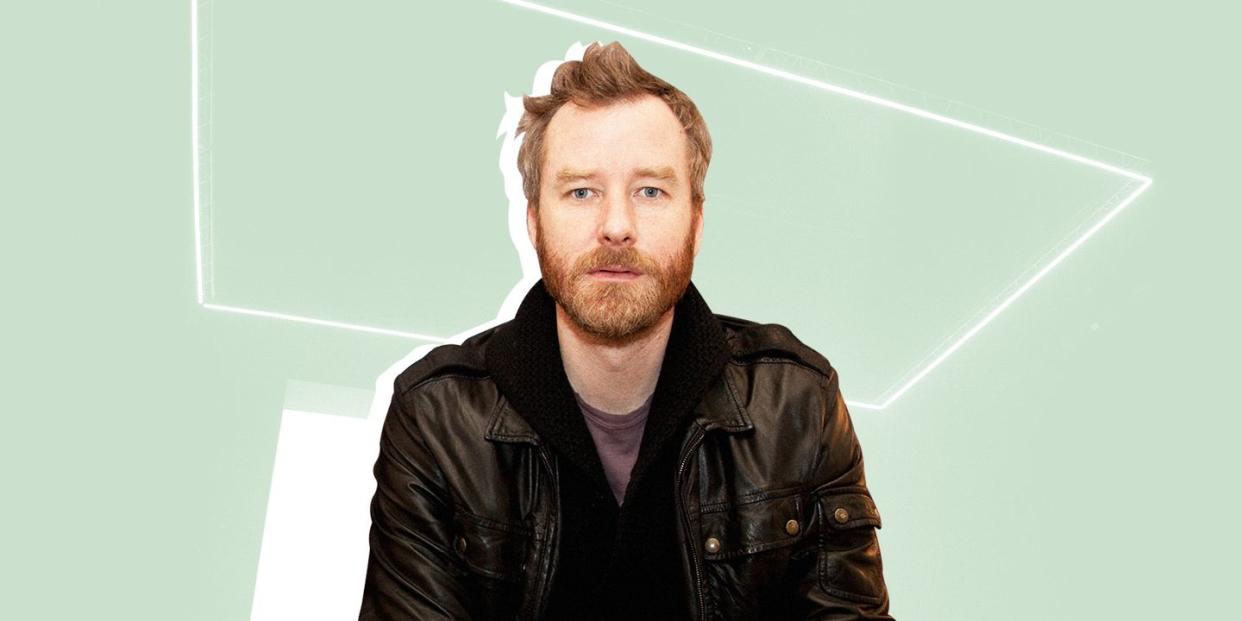If Matt Berninger Knew He'd Die Tomorrow, He'd Spend Today Listening to Tom Waits

- Oops!Something went wrong.Please try again later.
- Oops!Something went wrong.Please try again later.
Sometimes the most morbid of questions lead to the most fascinating answers. And that's the premise of Mike Ayers' new book, One Last Song: Conversations on Life, Death, and Music, in which he asks a number of renowned musicians what track they would play at the very end. In conversation with everyone from Jim James to Andre 3000, Ayers' question comes to some unexpected conclusions about life, music, death, and the human condition. Below, Matt Berninger of The National considers the last song he would choose to hear before he died.
I went through a Rain Dogs phase and a Tom Waits phase, in and out, all the time. Rain Dogs for a million reasons—there was a woman I was with in college who had it. Tom is being so mothered, so sweetly, on the cover, and that crazy name: Rain Dogs. That’s when I did a deep dive. Of all the Tom Waits records, it’s probably the one I chewed on the most. “Hang Down Your Head” is like a poppy breakup song.
He wrote it with his wife, Kathleen Brennan, and it’s so cool. Just abstract, thrown together. Like they’re seeing mumbled things. “Hush a wild violet, hush a band of gold / Hush you’re in a story I heard somebody told.” It’s just so beautiful and quiet and it’s this little pop song. This little morsel. It feels very effortless.
And then “Time” follows it up. It’s just filled with a series of beautiful images. You jump from surreal postcard to surreal postcard, and somehow it makes this incredible sense at the end. I’ve always thought it must be a song about death. But it’s not. “It’s time, time, time that you love” is the chorus. I always thought it was “It’s time, time, time that you live.” I always remember mishearing it as “live.” But it’s “love.” Time that you love. Time that you start letting love in, and loving yourself. It’s just one of these things that I can’t totally understand. It starts out with “Well, the smart money’s on Harlow.” I don’t know who Harlow is.
And I don’t care. I don’t care about the place necessarily, either—“east of east St. Louis” or wherever. These dominos of thought tumble into each other. But then it slows down: “It’s time, time, time to love.”
When I hear these, I think to myself that I’ve stolen every single line and rearranged it somewhere, and put it somewhere in a National song. Every single line I think, “Oh, I ripped that off from this other line.” They are songs that I’ve excavated subconsciously: totally stripped bare of their parts and reused.

“Time” is trying to connect with everything. It’s trying to understand these tiny moments that belong to all these people. Napoleon’s in the song! There are kids jumping off of cars and splashing in the streets. What is that? There’s a woman who kills a thousand pigeons with a razor from her boot. Your mind just gets blown with these beautiful things. Sad stuff and super-beautiful stuff. “So put a candle in a window and a kiss upon his lips.” It sounds like it could be from the cheesiest song ever written, yet there’s the lady that killed all the pigeons. He takes these turns in that song and it just feels that’s the way life is. One minute you can see something awful, and one minute someone could kiss you on the lips. That’s why the song works. And it keeps reminding you that it’s time to be loved. What else can you say? It’s one of those haunting ones.
“Hang Down Your Head” and “Time” . . . Hearing them, loving them, I probably never thought about it until now. What is it about those songs? Then you sit there and read the lyrics and read the context and you realize he put them in a sequence, where he was wearing big outfits. Caricatures. Rain Dogs comes out with all these vaudevillian, fetish characters. And then all of a sudden “Hang Down Your Head” and “Time”—it’s just Tom Waits. He’s not putting on any show here. It’s all coming right from him, who you think Tom Waits probably is.
I write songs with my wife a lot. We’ve written more and more collaboratively over the years. The first time we thought we wrote a song together happened on Boxer. When I was thinking about this question, I popped onto Wikipedia to do a little digging, and I think “Hang Down Your Head” was the first song Tom Waits co-credits with Kathleen Brennan. I love thinking about which were her lines and which were his. Of course, this song connects with me! It’s about a woman named Marie. His wife’s name is Kathleen. So they came up with a name to protect her probably—but of course it’s Kathleen! It can’t be anyone else. My wife, Carin, and I have done that so many times. Karen. Ada. Vanderlyle is probably my wife. Rylan is my wife, I think. And my daughter. “Hang Down Your Head” is the first song they wrote together—they take a person’s name—and just throw some lines at each other and put a melody to it.
I don’t know what art is if it’s not your real stuff. So what are you doing? Writing about other people? Or just trying for songs like they’re public service announcements? I don’t know what people are writing about if they’re not writing about their deepest loves, their deepest fears—their own. The real ones. You put them into these characters, you put them into these moments, and you make something beautiful out of it. “Hang Down Your Head” is a very sad song. One of our songs is “Sorrow.” I know I stole from Bowie for that one. I steal from everything, including my wife. And vice versa. She does the same. So yeah, it’s also like, “What is love about?” Love is about when you connect with somebody and you empathize and you see yourself in them and they see themselves in you. And you say, “I like you, you like me, I feel safe with you.” You make me feel braver and happier. Let’s create something together. A family. A record. A movie. Whatever. It’s that connection between people . . . that’s love. So art and love in my mind are kind of synonymous.
The connections between art and people . . . it’s like, you like that and I like that, “Let’s make a band.” It’s how you meet your friends. It’s how you talk to people. Even if you have no friends, you hear people like Michael Stipe and Morrissey and Kim Deal, people you never met, who can make something awesome out of all the same anxieties you have. And you love them. And you feel loved by that record. And that someone reached out to you. And they did! They got together, they made some stuff. It’s hard to write your first song, it’s hard to write your tenth song, it’s hard to write a record, and these people did. There’s usually zero reward for it. If you’re really lucky, other people will like it, too. Often people start bands because they can’t even talk to their own parents. They have to talk to the rest of the world and hope someone answers.
Music studios, art studios, music classes and art classes in high school, and rock venues are the churches where we tell the truth and reach out to God. And we find God in our friends, in the people we find that with. Some people find God in a religious institution or in a sports team. But for me, it’s in records. And radio stations. And rock clubs. And in bars.
So these two songs—“Hang Down Your Head” and “Time”—are embedded in my soul. I probably don’t even need to hear them again. And I think the afterlife is what you leave behind—or what you do every day. You cut somebody off in traffic and gave somebody the finger—it’s like, what’d you do? Did you make the universe more like heaven or more like hell? We’re all living in our own heavens and hells, all in the now. When my body is gone, when my consciousness is off—that’s just the bag, the container. The real me is already all over the place. You’re continuously painting your own afterlife. When I’m gone, somebody is going to be a little bit Matt Berninger.
You Might Also Like

